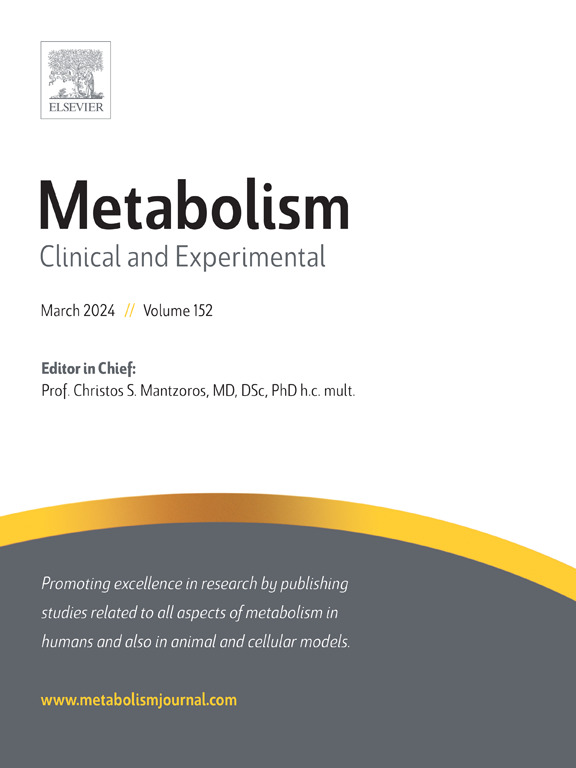Preclinical insights into the potential of itaconate and its derivatives for liver disease therapy
IF 10.8
1区 医学
Q1 ENDOCRINOLOGY & METABOLISM
引用次数: 0
Abstract
Annually, approximately 3.5 % of the world's population dies of cirrhosis or liver cancer, and the burden of liver disease is steadily expanding owing to multiple factors such as alcohol consumption, irrational diets, viral transmission, and exposure to drugs and toxins. However, the lack of effective therapies and the adverse effects of some medications remain a threat to the management of liver disease. Recently, immunometabolism, as an emerging discipline, appears to be the focus of unprecedented research. As a natural metabolite that regulates cellular functions, itaconate is a crucial bridge connecting metabolism and immune response. Remodeling immune function through metabolic modulation may be a promising alternative for disease intervention strategies. In this review, we first briefly describe the historical origin of itaconate and the development of its derivatives. This was followed by a review of the molecular mechanisms by which itaconate regulated immune-metabolic responses. Furthermore, we analyzed the effects of itaconate regulation on immune cells of the hepatic system. Finally, we summarized the experimental evidence for itaconate and its derivatives in the therapeutic application of liver diseases. Itaconate is potentially an invaluable component of emerging therapeutic strategies for liver disease.

求助全文
约1分钟内获得全文
求助全文
来源期刊

Metabolism: clinical and experimental
医学-内分泌学与代谢
CiteScore
18.90
自引率
3.10%
发文量
310
审稿时长
16 days
期刊介绍:
Metabolism upholds research excellence by disseminating high-quality original research, reviews, editorials, and commentaries covering all facets of human metabolism.
Consideration for publication in Metabolism extends to studies in humans, animal, and cellular models, with a particular emphasis on work demonstrating strong translational potential.
The journal addresses a range of topics, including:
- Energy Expenditure and Obesity
- Metabolic Syndrome, Prediabetes, and Diabetes
- Nutrition, Exercise, and the Environment
- Genetics and Genomics, Proteomics, and Metabolomics
- Carbohydrate, Lipid, and Protein Metabolism
- Endocrinology and Hypertension
- Mineral and Bone Metabolism
- Cardiovascular Diseases and Malignancies
- Inflammation in metabolism and immunometabolism
 求助内容:
求助内容: 应助结果提醒方式:
应助结果提醒方式:


